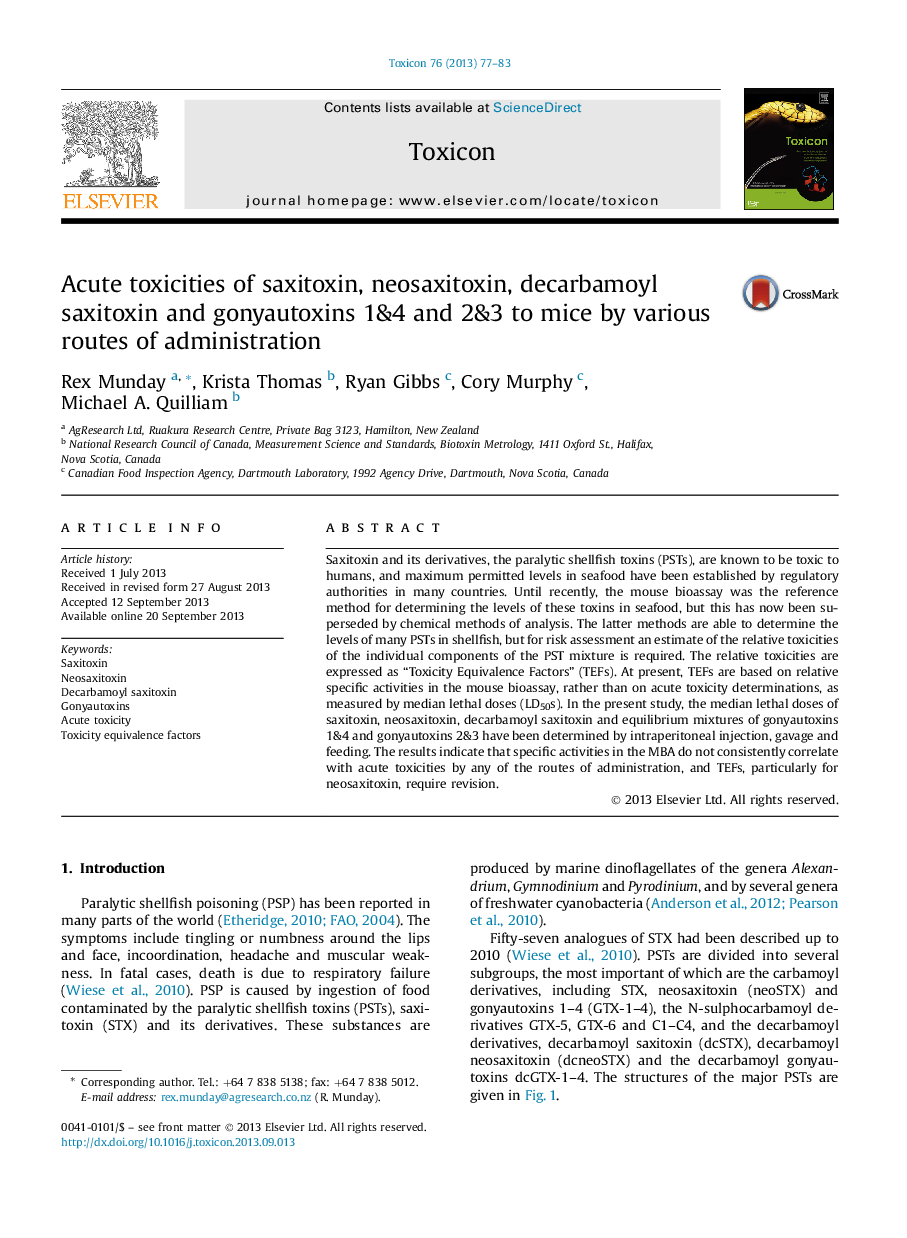| کد مقاله | کد نشریه | سال انتشار | مقاله انگلیسی | نسخه تمام متن |
|---|---|---|---|---|
| 8396906 | 1544159 | 2013 | 7 صفحه PDF | دانلود رایگان |
عنوان انگلیسی مقاله ISI
Acute toxicities of saxitoxin, neosaxitoxin, decarbamoyl saxitoxin and gonyautoxins 1&4 and 2&3 to mice by various routes of administration
ترجمه فارسی عنوان
سمیت حاد سکسیتوکسین، نئوازکتوکسین، دکارباموییل سکسیتوکسین و گنایوتوکسین ها 1 و 4 و 2 و 3 به موش ها با روش های مختلف تزریق
دانلود مقاله + سفارش ترجمه
دانلود مقاله ISI انگلیسی
رایگان برای ایرانیان
موضوعات مرتبط
علوم زیستی و بیوفناوری
بیوشیمی، ژنتیک و زیست شناسی مولکولی
بیوشیمی، ژنتیک و زیست شناسی مولکولی (عمومی)
چکیده انگلیسی
Saxitoxin and its derivatives, the paralytic shellfish toxins (PSTs), are known to be toxic to humans, and maximum permitted levels in seafood have been established by regulatory authorities in many countries. Until recently, the mouse bioassay was the reference method for determining the levels of these toxins in seafood, but this has now been superseded by chemical methods of analysis. The latter methods are able to determine the levels of many PSTs in shellfish, but for risk assessment an estimate of the relative toxicities of the individual components of the PST mixture is required. The relative toxicities are expressed as “Toxicity Equivalence Factors” (TEFs). At present, TEFs are based on relative specific activities in the mouse bioassay, rather than on acute toxicity determinations, as measured by median lethal doses (LD50s). In the present study, the median lethal doses of saxitoxin, neosaxitoxin, decarbamoyl saxitoxin and equilibrium mixtures of gonyautoxins 1&4 and gonyautoxins 2&3 have been determined by intraperitoneal injection, gavage and feeding. The results indicate that specific activities in the MBA do not consistently correlate with acute toxicities by any of the routes of administration, and TEFs, particularly for neosaxitoxin, require revision.
ناشر
Database: Elsevier - ScienceDirect (ساینس دایرکت)
Journal: Toxicon - Volume 76, 15 December 2013, Pages 77-83
Journal: Toxicon - Volume 76, 15 December 2013, Pages 77-83
نویسندگان
Rex Munday, Krista Thomas, Ryan Gibbs, Cory Murphy, Michael A. Quilliam,
